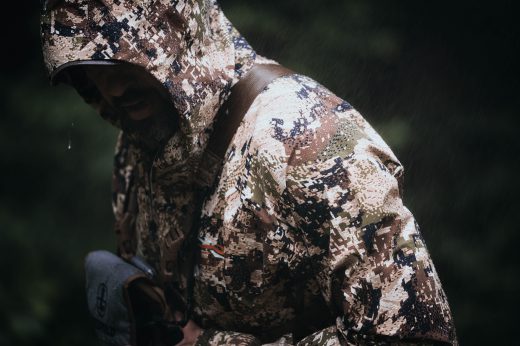Understanding how different wood burns is essential to getting the most out of your fire, whether building one in a hearth or in a fire ring for grilling, smoking, or drying. Master these simple tips to choose the best firewood and get the most out of your flames and coals.
Seasoned Wood vs. Green Wood
To ensure a kick-ass fire for any purpose, use seasoned wood, not green. Seasoned wood is necessary for a truly roaring fire because it has been kiln-dried or air-dried for a minimum of six months, which removes approximately 80% of its moisture and sap. Fires made with seasoned wood burn slow, produce a lot of heat, are long-lasting, and create less smoke.
When searching for campfire fuel, you can easily recognize naturally seasoned wood by looking for missing or loose bark with no visible green underneath. Look for dull-colored cracked wood that has a faint smell. Seasoned wood will sound hollow when knocked on.

Wood that has been alive within the past six months is difficult to light, less heat efficient, and may be dangerous to use indoors or in dry conditions outdoors because the moisture in it will cause it to pop like crazy.
The high moisture content can also lead to thick smoke, which, in turn, can result in the build-up of a highly flammable, sticky, black, tar-like substance called creosote: the notorious arsonist behind chimney fires. It also makes food taste bitter.
Hardwoods Make the Best Firewood
Stick with hardwood for the best cooking, smoking, and heating results. Hardwood trees are deciduous, meaning they lose their leaves annually. There are hundreds of hardwood species; always remember the denser the wood, the hotter and longer it will burn. Hardwoods will also split easier when dry.
Dense wood has less water and sap to start with, which also helps it burn better. Some long-lasting hardwood burners include ash, beech, black locus, birch, hickory, and oak. All of those are solid choices for cooking.

Pines, firs, spruce, cedars, softwood, and conifers, shed their cones and remain green year-round. These woods are a good choice for campfires because they ignite quickly and produce arguably the best campfire smell. But beware, these woods are also known to produce tons of sparks, crackles, and pops as they burn, along with heavy, thick smoke. This makes them a lousy choice for indoor fires.
The thick smoke is filled with resins that stick to virtually everything, including food, so these aren’t the best choice for direct cooking. The smoke can alter the flavor of food dramatically, and not in a good way.

Safety Briefing
It’s no surprise that fires can be dangerous and that you always must tend to a fire and make sure it remains contained. But a lot of people don’t think about the importance of knowing what wood shouldn’t be chucked into the fire.
It only takes one piece of wood with poison sumac, ivy, or oak on it, to set fire to someone’s lungs — for those who are particularly allergic, it could be fatal. If ever in doubt, use a dangerous plant ID guide or a plant identification app to make sure anything you’re about to torch is safe.

Avoid burning the following: poison sumac, wood from edible fig trees, ornamental trees, oleander, and all timber with poison ivy or oak attached, as they produce toxic and dangerous particles that may pose serious irreversible side effects.
Most people are pretty indiscriminate when choosing kindling to get a fire going, using anything from cardboard to paper food packaging. It used to be newspaper when newspapers were everywhere.
The problem is that some of the most often used kindling materials are laden with toxic chemicals that are released when burned. Inhaling or cooking over those fumes could lead to dire health impacts, some of which are irreversible. Do not burn cardboard, wooden pallets, plywood, particleboard, driftwood, or moldy rotted wood. And never burn pressure-treated or stained wood.
Understanding these beginner’s basics for choosing the best firewood is important for creating a solid foundation for backcountry and off-the-grid living that will always come in handy whether you’re cooking for a bunch of people at hunting camp, getting the fireplace going on a cold night, or building a fire to stave off hypothermia.
READ NEXT – Winterizing Your Survival Kit










Comments